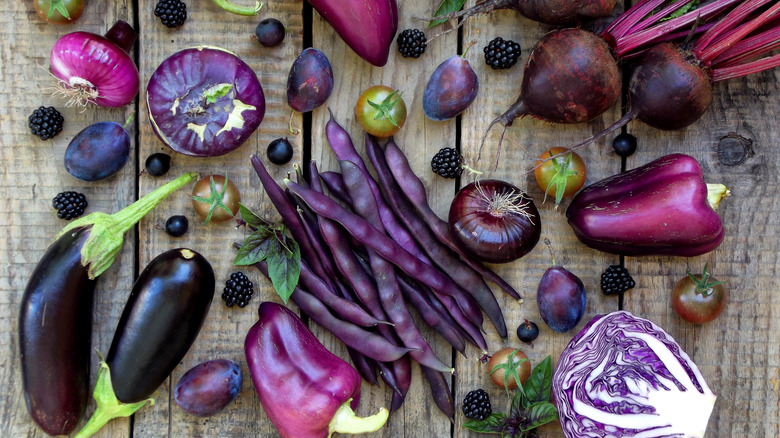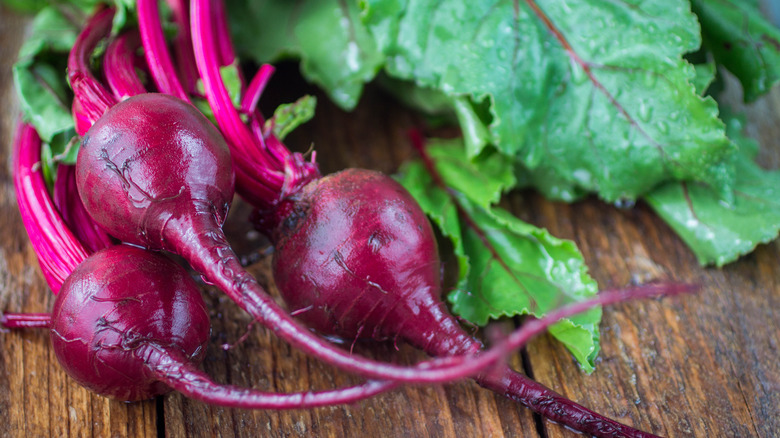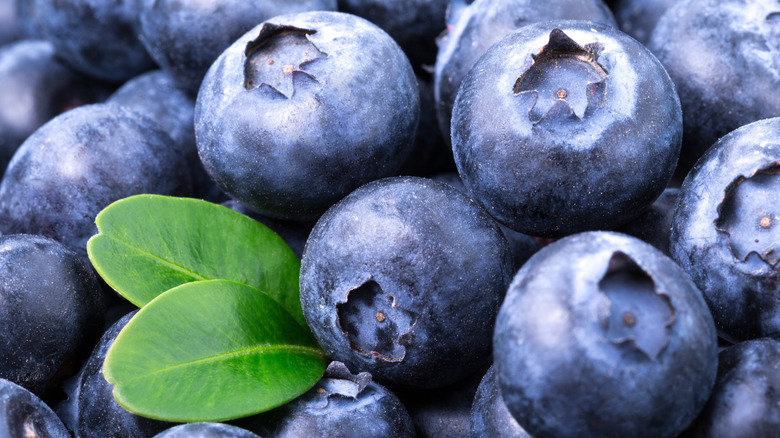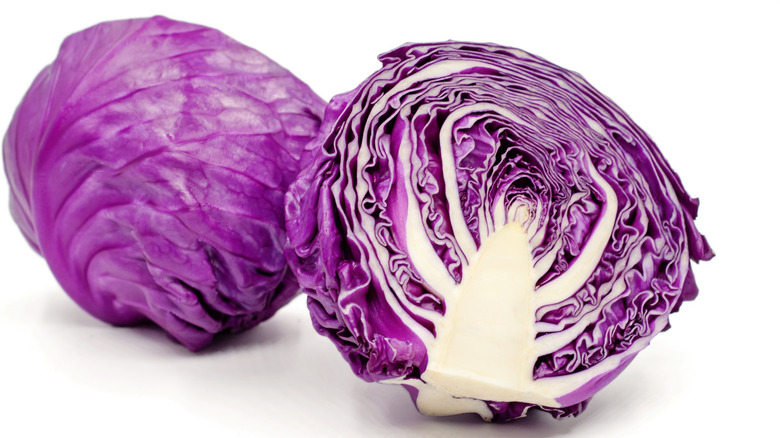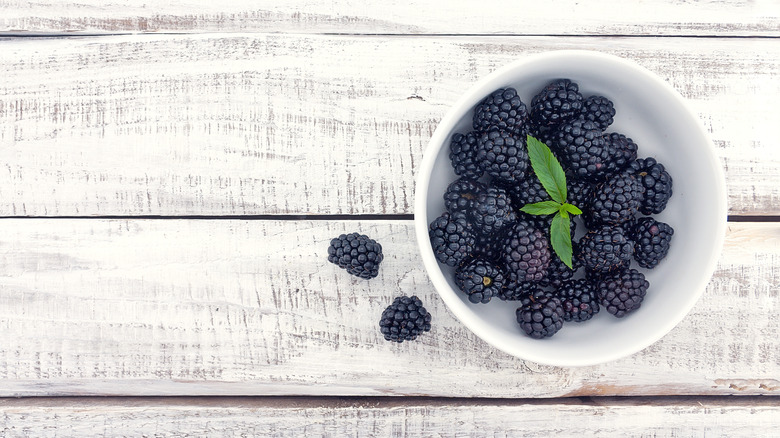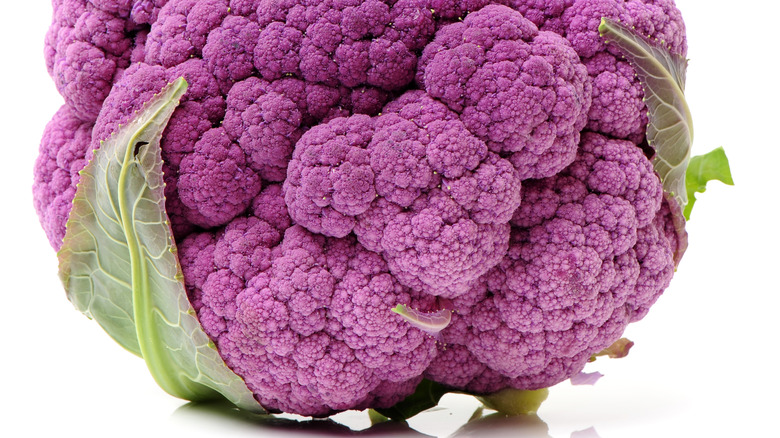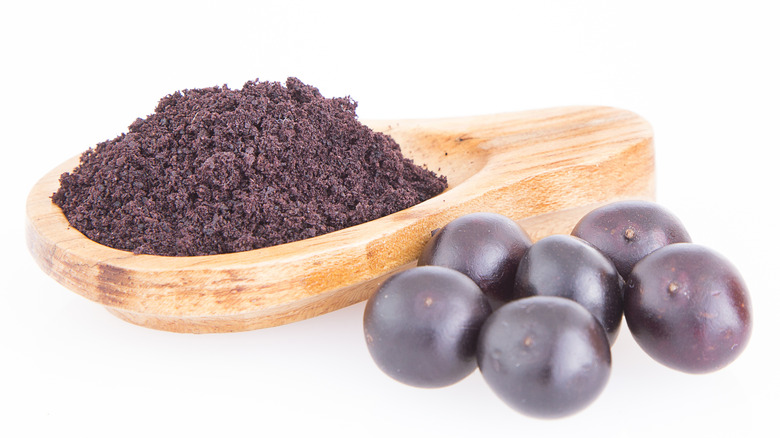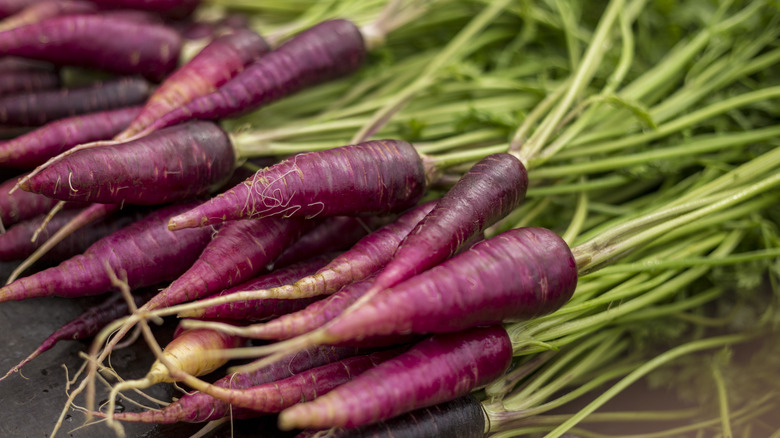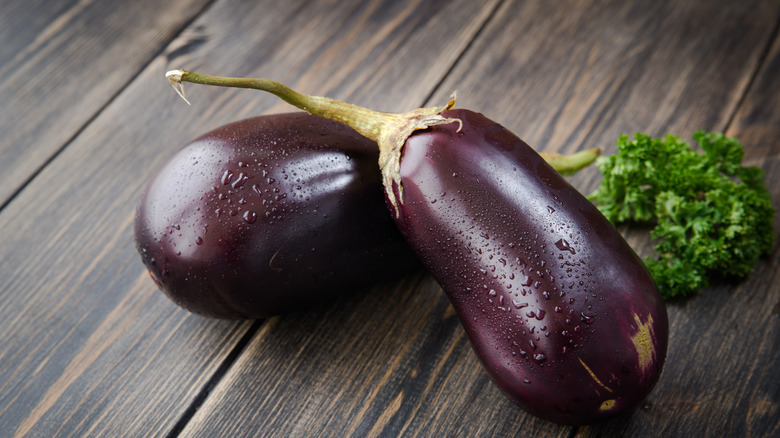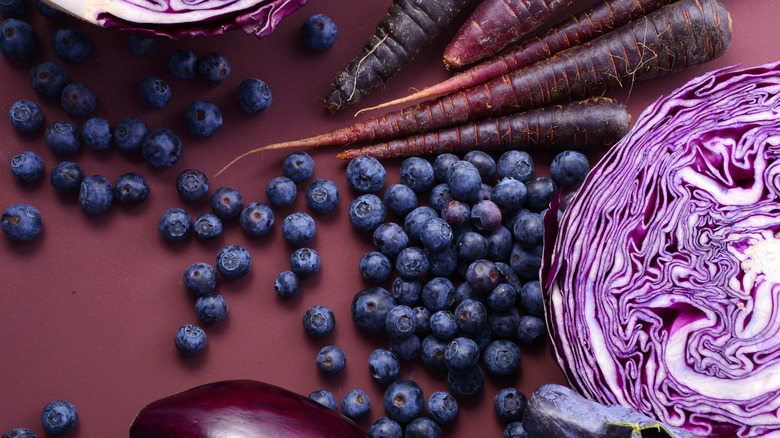The Eight Purple Fruits And Veggies You Need To Be Eating
A healthy diet is a colorful diet. Fruits and vegetables come in five main color categories: red, orange/yellow, purple/blue, white, and green. Each one of these colors represents, in general, a specific vitamin, mineral, or antioxidant. For example, green vegetables are high in vitamin K and folate, whereas orange or yellow fruits and veggies are usually high in beta carotene and vitamin C.
Although these aren't hard fast and rules, grouping fruits and veggies by color and trying to eat as many of each category as possible is a great way to ensure you are getting the nutrition variety your body needs. As a dietitian, one of the first suggestions I make is to always have an array of colors on your plate, your plate should look like a rainbow at every meal.
But, there is one color that can easily be ignored because these foods may not always be front of mind; that color is purple. Here is a list of purple foods you may want to try if you aren't eating them already. They are really incredible for health.
Why purple?
Purple or blue fruits and veggies are high in several powerful antioxidants. Antioxidants are substances that help the body fight against damaging, unstable molecules called free radicals. These molecules are formed during digestion, exercise, stress, and exposure to environmental pollution or chemicals.They must be neutralized quickly because they can cause damage at the cellular level leading to disease and premature aging. Antioxidants from food help neutralize these molecules, helping keep your body healthy.
Purple foods are particularly high in powerful antioxidants. Some of the main ones are flavonoids, polyphenols, and anthocyanin all of which have some incredible health benefits associated with them, including helping manage diabetes, reducing cholesterol levels, lowering inflammation, and helping maintain brain function as we age. Take a look at your diet, are you including any of these purple foods?
Beets
The deep purple color of beets is responsible for their amazing health benefits. Beets are high in several vitamins including A, C, and B6. They are also amazing sources of folate, fiber, zeaxanthin, lutein, and a variety of health-boosting minerals. One of the nutrients in beets, called betaine, has been linked to a lower risk of chronic disease. Beets can help control blood pressure and may help ward off dementia. They have also been shown to be beneficial for helping speed up recovery after exercise and may help increase performance during exercise. The bottom line is this purple vegetable is incredible for your health.
If you aren't sure how to eat beets, consider dicing them up, coating them with a little olive oil, and roasting them. This helps caramelize the sugar in the beets making them taste amazing. Once they are roasted top them with a little bit of goat cheese or feta to counteract their sweet taste.
Blueberries
These tiny blue-ish purple fruits are chock-full of antioxidants called anthocyanins, responsible for their color. But, the nutrition doesn't stop there, they also have other antioxidants such as quercetin and kaempferol, which provide additional health benefits. They are also high in several vitamins and minerals including iron, calcium, zinc, and vitamins K and C. Blueberries have been studied for their potential benefits to decrease the risk of diabetes, heart disease, Alzheimer's disease, and obesity. One study even showed that blueberries were able to decrease the growth of cancer cells by 50 percent.
These summer treats are also incredibly delicious and can be eaten fresh or added to several recipes. They can easily be added as toppings to breakfast foods such as cereal, oatmeal, or pancakes and also make a delicious addition to smoothies and even to salads.
Cabbage
Cabbage is a cruciferous vegetable meaning it contains a type of sulfur compound similar to broccoli, kale, and Brussels sprouts. The sulfur in these vegetables is notorious for the potential to cause gas after eating them, although it is not a harmful side effect. Cruciferous vegetables are high in anthocyanins, flavonoids, carotenoids, and other antioxidants. These vegetables, like cabbage, have been linked to a decreased risk for cancer and heart disease due anti-inflammatory activity and influence on certain hormones. Purple cabbage specifically is also high in fiber and vitamin K.
Purple cabbage tastes delicious as a simple salad with a little bit of lemon, olive oil, salt, and pepper, just let the dressing soak in for 20-30 minutes. Cabbage is also a great way to add some extra fiber and nutrients to soup, as it has a neutral flavor and tends to hold up well to cooking.
Blackberries
Blackberries are another incredible fruit with health benefits almost matching those of blueberries. They are full of similar antioxidants found in other purple fruits and veggies, but also high in vitamin C, fiber, lutein, zeaxanthin, potassium, and magnesium. They rank as one of the highest rated fruits for helping neutralize free radicals based on their antioxidant capacity. They have been shown to help slow the growth of lung, breast, colon, and prostate cancers. Talk about one incredible tiny berry. This benefit may be related to two specific antioxidants called cyanidin 3-glucoside and ellagic acid. They may also be beneficial for helping maintain brain health.
Blackberries taste amazing on their own and they can also be added to smoothies, salads, or even desserts. The important thing is that you eat them.
Purple cauliflower
Purple cauliflower is similar in nutritional content as regular white cauliflower, with one exception — the purple color means it is high in anthocyanins. Just like its white counterpart it is low in calories, yet high in fiber. It also has a significant amount of vitamins C, K, B6, and folate. It is part of the cruciferous vegetable family, along with cabbage, broccoli, and Brussels sprouts, which have been shown to be beneficial for reducing the risk of cancer, particularly those of the lung and gastrointestinal tract.
Purple cauliflower can be prepared and consumed in a similar way as white cauliflower. Roasting it tastes amazing, but it can also be eaten raw, pickled, or added to soups for an extra fiber boost. You may also consider freezing it and adding it into a smoothie for some extra fiber.
Acai
The acai berry is a small fruit that comes from a specific type of palm tree found in the rain forest of South America. It has become more common in the United States recently and can be found as an ingredient in smoothies, shakes, or bowls. The benefits of acai come from its high level of anthocyanins that can help protect the heart, reduce blood pressure, and reduce the risk of many diseases. One study found that it significantly helped reduce cholesterol and improved blood sugar control in overweight subjects.
Acai is usually found frozen as a puree and it is commonly used as a base for "acai bowls" and topped with fruit, granola, or other toppings. The puree can also be added to smoothies for an extra antioxidant boost.
Purple carrots
Purple carrots not only add a pop of color to any meal, they actually aren't that different nutrition-wise from their orange counterparts, with one exception. Like purple cauliflower, the deep purple color in these carrots comes from the anthocyanins they contain and that makes them a bit more beneficial in terms of health. Don't discount our orange friends just yet though, purple and orange have about the same amount of beta-carotene or vitamin A.
You may have just started seeing them at farmers markets, but they are actually not a new variety at all. Eat them raw, shred them into salads, or roast them along with other colorful carrot varieties for a beautiful side-dish.
Eggplant
Eggplant is one of my favorite vegetables, although a lot of people can't get over the slimy texture. But, since they are incredibly high in nutrients, you may want to consider giving them a shot. Eggplant is an amazing source of vitamins, K, C, B6, and multiple minerals necessary for health and, like most vegetables, it is also high in fiber. In addition, the anthocyanins in eggplant may reduce risk for cancer, improve cardiovascular risk factors, and prevent aging of the brain.
If you want to try eggplant, consider adding it to a tomato sauce to serve over pasta. It also tastes great roasted or grilled and can be used as a base for a noodle free lasagna, if you just cut it into thin strips and layer it along with your favorite lasagna ingredients.
Maximizing nutrition with purple power
The best way to maximize the nutrients from these amazing purple fruits and veggies is to eat a wide variety as often as possible. This doesn't mean you have to eat them all every day, but just make sure your diet includes at least one purple or blue item per day. Choose those that are in season — for example, berries are at their least expensive and most nutritious during the summer months. Buy locally grown, if possible, to maximize the nutrients they contain. Eat a combination of cooked and raw because some nutrients are better absorbed when cooked and others are preserved better when raw. Also, eat the ones you like. No need to force yourself to eat cabbage if it just doesn't work for you, pick something you do enjoy instead.
This list is by no means extensive of all the purple fruits and veggies out there. Figs, plums, grapes, and olives are other foods you can try for the same benefits. Also, many common veggies such as asparagus, potatoes, onions, and corn can all be found in purple. Even rice has a purple variety with similar health benefits. Many farmers markets are carrying a greater variety of colors these days, so pick them up next time you go. Challenge yourself and see where you can add a pop of purple into your diet.

